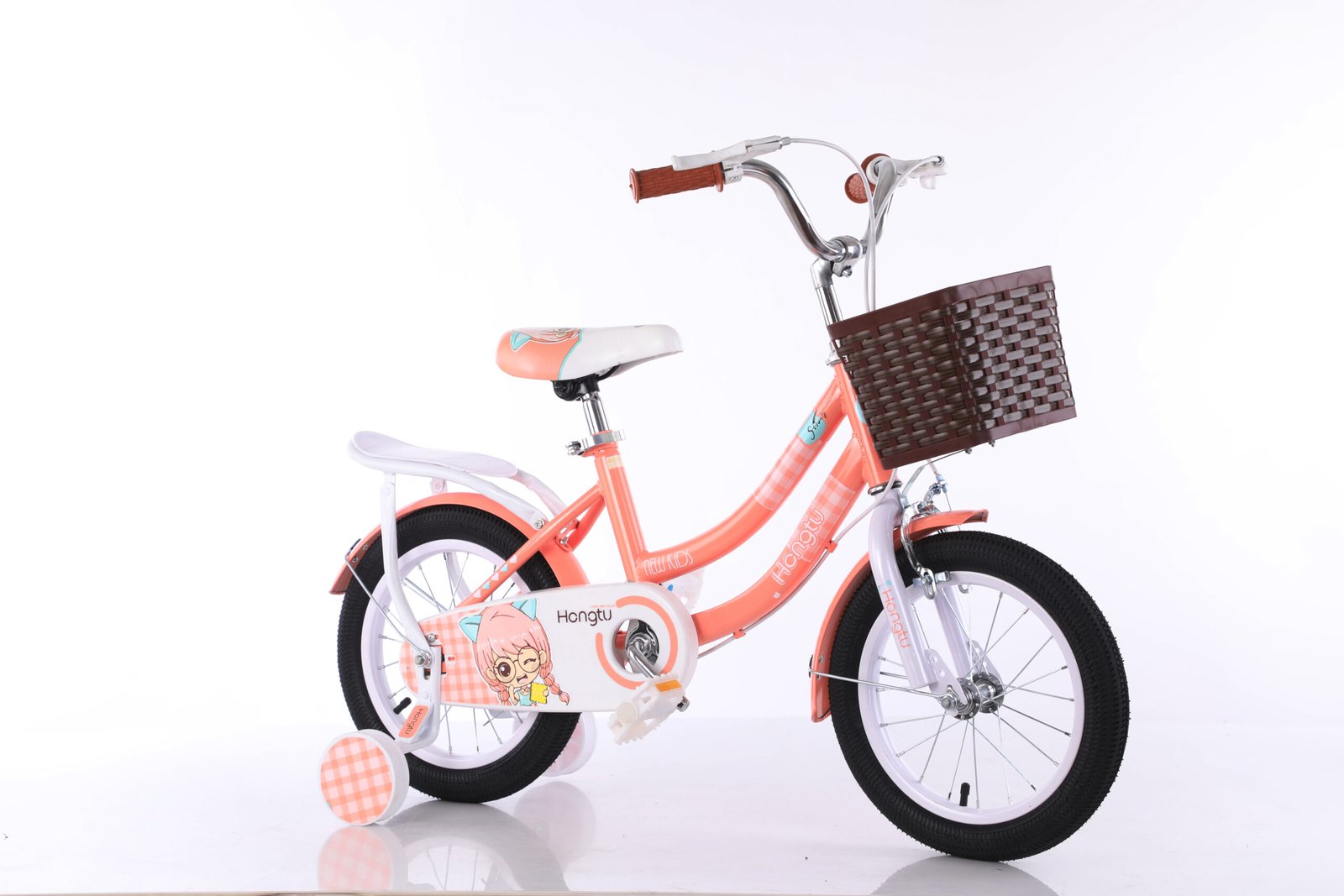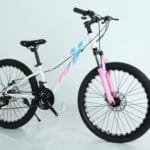Children’s Bicycle Selection Guide

Understanding Children’s Bicycles
Children’s bicycles, particularly for those aged 4 to 8 years, are designed with specific features that accommodate the physical attributes and developmental needs of younger riders. These bicycles prioritize safety, comfort, and ease of use, ensuring that children can learn and enjoy cycling with confidence. A key aspect of children’s bicycles is the appropriate maximum saddle height, which ranges from approximately 435mm to 635mm. This range is crucial as it allows children to touch the ground securely with their feet while seated on the saddle, promoting balance and stability.
The design of children’s bicycles also includes a lightweight frame, enabling easy maneuverability for young riders. A lightweight structure ensures that the bicycle can be easily handled, making it less intimidating for children who are just learning to ride. Furthermore, many children’s bicycles come equipped with single-speed gearing, which simplifies the riding experience. At this age, children are typically still developing their coordination and strength, and a straightforward pedal mechanism enables them to focus on balancing rather than complex shifting practices.
An essential element in the construction of children’s bicycles is the driving mechanism, which operates on the rear wheel. This design choice is significant because it promotes a smoother ride and enhances traction, encouraging children to gain confidence as they ride. The rear-wheel drive system aids in maintaining stability, minimizing the risk of tip-overs, and alleviating the strain of cycling. Additionally, many models are designed with protective features such as chainguards and adjustable handlebars, catering to the evolving needs of children within this age group.
Overall, understanding the specific requirements of children’s bicycles aids in selecting a suitable model for young riders. Parents should consider these features to choose a bicycle that enhances the riding experience for their children, fostering a lifelong love for cycling.
Importance of Size and Fit
The proper size and fit of a children’s bicycle are paramount for ensuring both safety and comfort during riding. For children aged 4-8, selecting a bicycle that aligns with their height and inseam measurements is essential. An ill-fitting bicycle can lead to significant challenges, such as difficulties in controlling the bike effectively, which may in turn affect their ability to use the handbrakes properly. This can increase the risk of accidents and injuries, underlining the importance of a precise fit.
When a child rides a bicycle that is too large, they may struggle to reach the handlebars or apply the brakes effectively. This inability to engage the handbrake can result in dangerously inadequate stopping power, particularly on downhill slopes or when navigating through busy environments. Conversely, a bike that is too small may lead to discomfort, as children may have to crouch or pedal awkwardly, which can detract from their riding enjoyment and development of cycling skills.
Selecting the right size bicycle also encourages confidence and improves the overall experience for young riders. A well-fitting bike allows children to place their feet flat on the ground, promoting stability when starting and stopping. Additionally, this enhances their understanding of balance and control, which are integral components of building a proficient cyclist. Introducing children to cycling in a safe manner not only fosters a lifelong love of biking but also nurtures skills that can be beneficial in other physical activities.
Ultimately, investing time in finding a bicycle that is appropriately sized for a child cannot be overstated. It is a crucial step toward ensuring their safety and enjoyment, forming the foundation of positive cycling experiences as they grow. By prioritizing size and fit, parents and guardians can support their child in developing confidence and competence on two wheels.
Selecting the Right Wheel Diameter and Style
When selecting a bicycle for children aged 4-8, one of the most crucial factors is the wheel diameter. The wheel size significantly influences the child’s comfort, control, and overall riding experience. Generally, children’s bicycles come in various wheel sizes, primarily ranging from 12 to 20 inches. For example, a bike with a 12-inch wheel is ideal for younger children who are just starting to learn how to ride, typically around ages 4 to 5. As the child grows and gains confidence, transitioning to larger wheel sizes, such as 16 or 20 inches, can be more suitable.
Beyond size, the style of the bicycle also plays a vital role in the child’s riding experience. Bicycles can be categorized into different styles, including traditional bikes, balance bikes, and even those equipped with training wheels. Balance bikes, which do not have pedals and allow children to focus on balancing, are ideal for beginners. They foster coordination and help children understand the mechanics of riding before transitioning to pedal bikes. On the other hand, traditional bikes may come with or without training wheels. Training wheels provide additional stability for new riders, although they may hinder the development of balancing skills in some cases.
Moreover, the choice between bikes with and without balance wheels should consider the child’s readiness and specific needs. Bikes without balance wheels can be left to the individual child’s skill level; some may adapt quickly, while others might require more support. Ultimately, selecting the right wheel diameter and style is essential for enhancing your child’s riding experience. This process should take into account the child’s height, leg length, and newfound confidence on two wheels, ensuring they have an enjoyable adventure cycling.
Braking Mechanisms and Safety Standards
When selecting a bicycle for children aged 4-8, understanding braking mechanisms and associated safety standards is crucial. One of the most important factors to consider is the braking force, which should not be less than 50 Newtons (N). Adequate braking force is essential for ensuring a child’s ability to stop the bicycle effectively, especially during emergencies or unexpected situations. If the braking system does not meet this minimum standard, the risk of accidents can increase significantly, leading to potential injuries.
There are two primary types of braking systems commonly found on children’s bicycles: coaster brakes and hand brakes. Coaster brakes, often found on lower-end models, engage when the rider pedals backward. While simple to use, they may not provide the necessary stopping power in all situations. Conversely, hand brakes, which operate through levers and cables, allow for greater control over stopping force. As children become more skilled at cycling, hand brakes generally become a more effective choice, as they can offer better modulation and responsiveness.
In addition to understanding the type of brake system, parents should evaluate the positioning and accessibility of the brake levers. Hand brakes should be easy for small hands to reach and operate. Furthermore, it is essential to choose bicycles that adhere to safety standards set by regulatory bodies, such as the Consumer Product Safety Commission (CPSC). This ensures that the bicycle is designed with child safety in mind, offering reliable performance in various conditions.
Overall, ensuring that a child’s bicycle features an effective braking mechanism with adequate force is vital for their safety. When exploring options, parents should consider the braking system’s design, strength, and compliance with established safety standards, promoting a secure riding experience for their children.
The Role of Balance Wheels
Balance wheels, often referred to as training wheels, play a pivotal role in the development of children’s cycling skills, particularly for those aged 4-8 years. These wheels are designed to provide additional stability and support, ensuring young riders feel secure as they learn to navigate their bicycles. The primary function of balance wheels is to prevent falls, allowing children to focus on mastering the fundamental techniques of pedaling and steering without the fear of losing balance.
The importance of stability cannot be overstated when it comes to learning to ride a bicycle. For many children, the initial learning phase can be intimidating; however, balance wheels act as a safety net that encourages their first attempts to ride. As these learners build confidence, they begin to develop essential motor skills, such as coordination and reflex response, which significantly contribute to their overall physical development. Many experts recommend that parents emphasize the use of balance wheels during this learning phase, as they can facilitate a smoother transition from reliance on training aids to independent riding.
For parents considering the implementation of balance wheels, there are several guidelines to bear in mind. It is advisable to ensure that the training wheels are appropriately installed, allowing for slight adjustments in height as the child gains more confidence. Monitoring the child’s progress is also crucial; it is important to gradually remove the balance wheels once the child demonstrates reliable control over the bicycle. This gradual phasing out helps foster independence, encouraging them to learn how to balance on two wheels without the added support. Overall, balance wheels serve a significant purpose in the early stages of cycling, making the process not only safer but also enjoyable for young riders.
Where to Shop for Children’s Bicycles
Finding the perfect bicycle for your child aged 4-8 can be an exciting yet challenging experience. The right bicycle needs to accommodate comfort, safety, and style, making the shopping process crucial. When selecting a store for purchasing children’s bicycles, consider local bike shops, large retail chains, and online platforms, each offering unique advantages.
Local bike shops often provide a wide variety of options tailored specifically for children. These stores usually have knowledgeable staff who can assist you in selecting the appropriate model, as well as ensuring proper fit. One major advantage of shopping at a local store is the ability for children to physically try out different bicycles. This hands-on approach allows parents and kids to evaluate comfort, handling, and overall appeal before making a purchase.
On the other hand, large retail chains may offer competitive pricing and a wide selection of children’s bicycles. These stores often carry a range of brands and styles, catering to budgets of all sizes. However, it may be less feasible for children to test the bicycles for fit in these environments, making it important for parents to research sizing and features beforehand. Complimenting visits to physical stores with online research can enhance decision-making.
In recent years, online shopping for children’s bicycles has gained popularity. Numerous e-commerce platforms provide an extensive array of bicycles, often with user reviews aiding in the selection process. However, purchasing online limits the ability to test the fit, thus making it necessary for parents to carefully check the size charts provided and consider utilizing local bike shops for assembly and adjustments.
In conclusion, each shopping platform has distinct advantages when purchasing children’s bicycles. Prioritize the opportunity for your child to try out bicycles for comfort and fit while considering convenience and pricing. Making informed choices will ensure that your child’s first riding experiences are both enjoyable and safe.
Safety Precautions and Best Practices
Ensuring the safety of children while they ride bicycles is of paramount importance. Parents should consider several safety precautions when selecting a bicycle for children aged 4-8. First and foremost, the proper size of the bicycle is crucial. A bike that is too large or too small can lead to a loss of control, increasing the risk of accidents. Parents should measure the child’s inseam and select a bicycle that allows the child to place their feet flat on the ground while seated.
Another critical safety measure is the use of helmets. A properly fitted bicycle helmet can significantly reduce the risk of head injuries in the event of a fall. Parents should ensure that the helmet meets safety standards, is well-fitted, and is worn every time the child rides their bicycle. Additionally, it is advisable to incorporate other protective gear, such as knee and elbow pads, especially for beginners who are still mastering their riding skills.
Ongoing supervision is also an essential best practice. Parents should supervise their children while they are riding, particularly in the early stages of learning. Not only does this oversight provide reassurance for the child, but it also allows parents to intervene in the event of unsafe behavior, such as riding inappropriately near traffic or engaging in reckless stunts. Furthermore, teaching children about road safety, including understanding traffic signals and looking both ways before crossing the road, is vital.
Lastly, establishing safe riding areas such as parks or closed roadways where children can practice is highly recommended. This provides a controlled environment free from vehicles, allowing children to develop their cycling skills without the undue risk of accidents. By adhering to these safety precautions and best practices, parents can help ensure their child’s cycling experience is enjoyable and secure.
Common Mistakes to Avoid When Choosing a Bicycle
Selecting the right bicycle for children aged 4-8 is a task that requires careful consideration. Unfortunately, parents often fall into several traps that can affect their child’s safety and overall enjoyment of cycling. One of the most common mistakes is overlooking the importance of size and fit. A bicycle that is too large or too small can not only hinder a child’s ability to ride effectively but also pose safety risks. It is crucial to ensure that the child can comfortably reach the handlebars and pedals, as well as have both feet flat on the ground when seated.
Another frequent error is neglecting to prioritize safety features. Many parents may be drawn to aesthetically pleasing designs or advanced features but fail to examine critical safety aspects. When purchasing a bicycle, it is essential to look for reliable brakes, a sturdy frame, and a proper chain guard to protect small fingers. Additionally, helmets should always be considered as part of the overall bicycle safety setup. Choosing a bicycle without safety gear can lead to accidents that could have been avoided.
In addition to size and safety, many parents also underestimate the importance of proper guidance in teaching their children how to ride. Buying a bicycle without checking the child’s readiness can result in frustration. It is wise to assess the child’s physical abilities and confidence levels before making a purchase. Furthermore, some parents may buy a bicycle with too many gears or features that can overwhelm young riders, making it difficult for them to learn the basics of cycling.
Finally, parents often overlook the potential for future growth. Children grow quickly, and a bicycle should ideally accommodate longer usage. Choosing a bicycle that can last for a couple of years, adapting to the child’s growth and increasing skill level, is a smarter decision. By avoiding these common mistakes, parents can make an informed decision, ensuring a safer and more enjoyable cycling experience for their children.
Conclusion: Making the Right Choice for Your Child
Choosing the right bicycle for children aged 4-8 is a task that requires careful consideration of various factors. Throughout this guide, we have explored the essential aspects to keep in mind when selecting a bicycle for your child. Understanding the importance of safety, fit, and durability is crucial in ensuring that your child can ride with confidence and enjoyment.
First and foremost, selecting the correct size bicycle is vital. A properly sized bicycle not only enhances comfort but also promotes safe riding practices. When a child rides a bike that fits them well, they are likelier to gain the necessary skills, such as balance and control. It is recommended to have your child test out different sizes to determine which one feels the most comfortable for them. Additionally, considering their growth is essential; it may be prudent to purchase a slightly larger bicycle that allows for adjustment as they grow.
Moreover, safety features such as quality brakes, reflectors, and sturdy tires cannot be ignored. As these young riders explore their surroundings, protective gear including helmets and knee pads should always be utilized. This not only helps in preventing injuries but also instills a sense of responsibility regarding safety while cycling.
Finally, considering the type of riding your child is likely to engage in, such as casual rides around the neighborhood or more adventurous trails, can influence your decision. Opt for a bicycle that matches their interests and riding style to foster a love for cycling that can last a lifetime.
In conclusion, by prioritizing safety, proper sizing, and understanding your child’s riding preferences, you can make an informed decision that will lead to a rewarding cycling experience for your child. Investing time in choosing the right bicycle ensures both enjoyment and safety on their cycling adventures.


